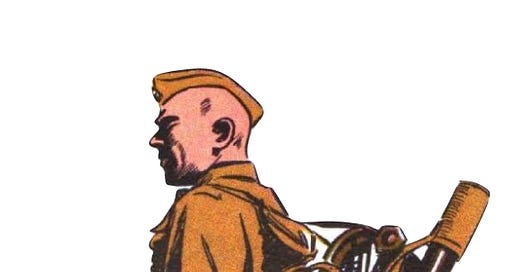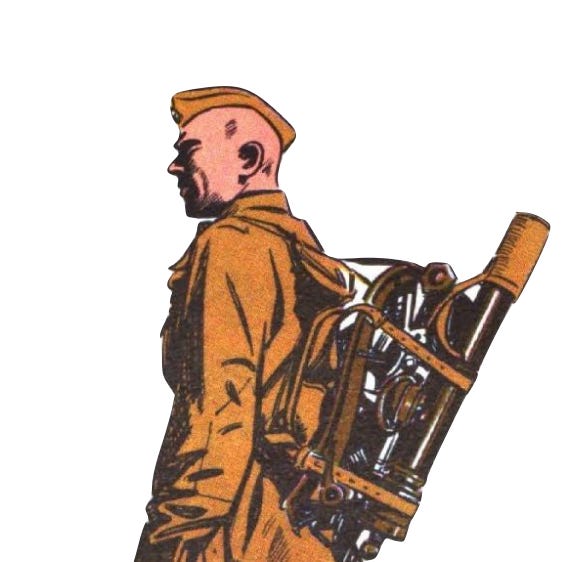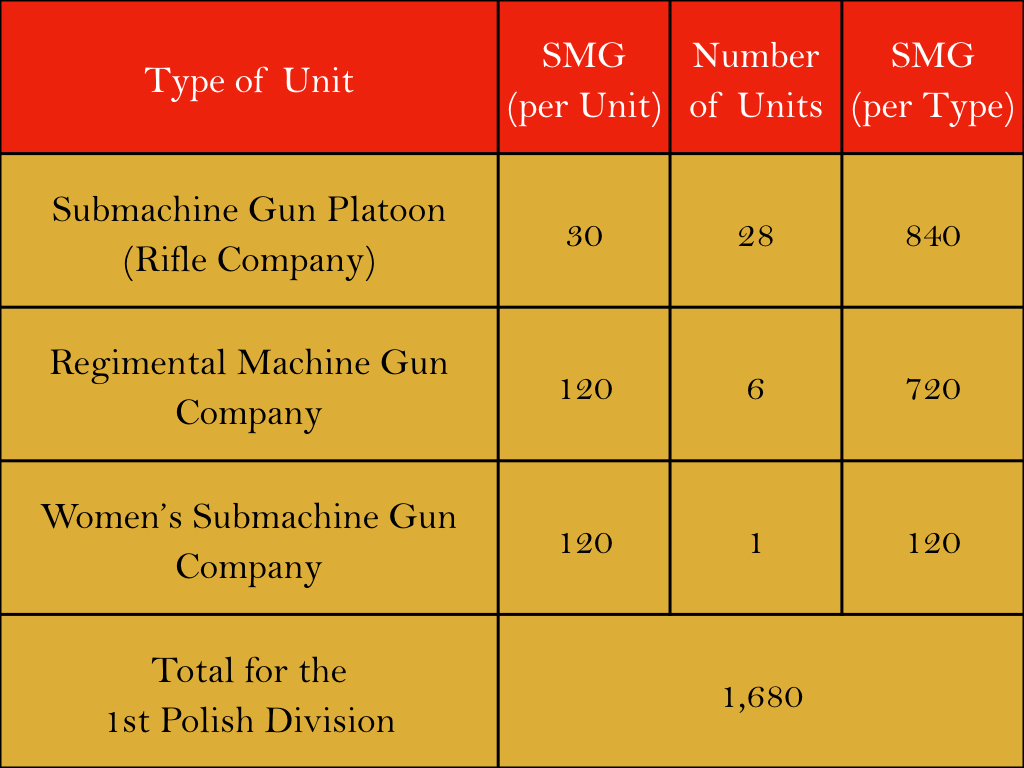The following description of the First Polish Division in September of 1943 is taken from the report of the interrogation of a Polish lieutenant captured by elements of the German XXXIX Panzer Corps in the vicinity of Rzhev.
The Soviet First Polish Division was formed in May of 1943 in Ryazan, a city southeast of Moscow. It was organized as a largely muscle-powered infantry division, with a few changes made to accommodate its particular nature as an exclusively Polish organization.
The greatest of these was the tank regiment, which, though organic to the First Polish Division, was often employed separately. The prisoner being interrogated didn’t know much about this regiment. A few weeks before his capture, however, he was present at a parade where he counted 20 tanks.
Another peculiarity of the First Polish Division was its “Women’s Battalion.” In contrast to many contemporary Soviet units, which were “co-ed” down to the squad level, the Polish Division kept the sexes separate.
The “Women’s Battalion” consisted of five companies, each of approximately 150 women. These were:
a medical company
an NCO school
a communications company
a submachinegun company
a rifle company
Given the divergent functions of these five companies, the only conceivable way that the Women’s Battalion could have been employed as a complete unit was if it was used as a service and security unit in the division rear areas. Alternatively, it may only have served as an administrative umbrella for any company which happened to be composed of women.
The exception to the rule of separation of the sexes was found in the division’s small Medical Battalion. This 300 person unit was described by the prisoner as having “many women.”
The bulk of the combat power of the First Polish Division, as well as the bulk of the personnel, could be found in its three rifle regiments. At 2,500 men each, these regiments were somewhat larger than contemporary Soviet formations.
At the same time, the 1st Polish Division was comparatively weak in artillery. The sole artillery regiment consisted of four six-gun batteries. (These seem to have been controlled directly by the regimental headquarters, as there was no battalion organization.) Some compensation for this lack of division-level firepower came in the form of infantry heavy weapons belonging to regiments and battalions. These were provided on a scale that compared favorably with contemporary German practice.
Each of the three rifle battalions had two 45mm anti-tank guns, eight 82mm medium mortars, and eighteen heavy machine guns. (The latter were allotted, at a rate of six machine guns per company, to the three rifle companies.)
The officer commanding each rifle regiment exercised direct control over a platoon of 45mm anti-tank guns, a platoon of four 120mm mortars, and a “regimental artillery” composed of eight 76.2 mm “regimental” guns. (In 1943, older regimental guns were weapons with relatively short barrels that corresponded to German infantry guns of the era. Newer regimental guns had longer barrels, which improved their ability to do damage to tanks.)
In addition to its rifle battalions and heavy weapons units, the rifle regiment possessed a pioneer platoon, a gas defense platoon, two submachine gun companies, and two companies armed with anti-tank rifles. (By 1943, most armies had stopped using anti-tank rifles for their definitive purpose. The Soviet Army, however, was the exception to that rule.)
In keeping with contemporary Soviet practice, the rifle regiments of the 1st Polish Division employed large numbers of submachine guns.
One half of the submachine gunners in the 1st Polish Division served in submachine gun companies. The other half served in the submachine gun platoons of rifle companies. (Twenty-seven of the rifle companies belonged to rifle battalions. One was part of the Women’s Battalion.)
Each rifle company consisted of five platoons, each of which was numbered within the company in accordance with the following scheme.
submachine gun platoon (thirty soldiers)
rifle platoon (eight light machine guns, forty soldiers)
rifle platoon (eight light machine guns, forty soldiers)
mortar platoon (two 50mm mortars, eight soldiers)
machine gun platoon (two heavy machine guns, twelve soldiers)
Source: Generalkommando XXXIX Panzerkorps, Ic, 13/10/43, U.S. National Archives, Series T-314, Roll 1361, Frames 720-5
Pictures: The pictures in this article come from Our Red Army Ally, a pamphlet published by the US Army in 1945.
For Further Reading: Polska Dywizja Piechoty on the living history (re-enactor) website RedGuard.weebly.com









Less rifles more firepower more crew served seems to be the wartime drift.